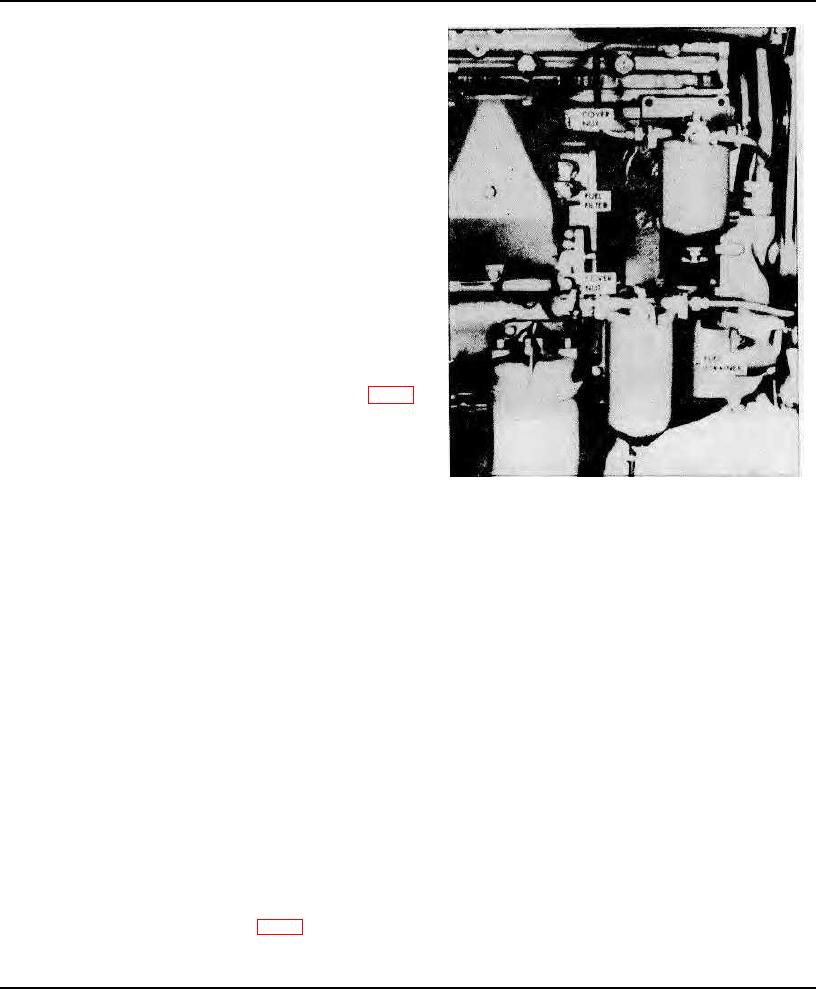
Engine Systems
Fuel Pump
A positive displacement gear-type fuel pump is attached to the
governor or blower on the In-line engines and to the flywheel
housing on the V-type engines.
A spring-loaded relief valve, incorporated in the pump body,
normally remains in the closed position, operating only when the
pressure on the outlet side (to the fuel filter) becomes excessive
due to a plugged filter or fuel line.
The fuel pump incorporates two oil seals. Two tapped holes are
provided in the underside of the pump body, between the oil
seals, to permit a drain tube to be attached. If fuel leakage
exceeds one drop per minute, the seals must be replaced. An
authorized Detroit Diesel Allison Service Outlet is properly
equipped to replace the seals.
Fuel pumps are furnished in either left or right-hand rotation,
according to the engine model, and are stamped RH or LH.
These pumps are not interchangeable and cannot be rebuilt to
operate in an opposite rotation.
Fuel Strainer and Fuel Filter
A replaceable-element type fuel strainer and fuel filter (Fig. 4)
are used in the fuel system to remove impurities from the fuel.
The strainer removes the larger particles and the filter removes
the small foreign particles.
The fuel strainer and fuel filter are basically identical in
construction, both consisting of a cover, shell and replaceable
element. Since the fuel strainer is placed between the fuel supply
Fig. 4 - Typical Fuel Strainer and Filter Mounting
tank and the fuel pump, it functions under suction; the fuel filter,
which is installed between the fuel pump and the fuel inlet
manifold in the cylinder head, operates under pressure.
Replace the elements as follows:
1. With the engine shut down, place a suitable container under the fuel strainer or filter and open the drain cock. The
fuel will drain more freely if the cover nut is loosened slightly.
2. Support the shell, unscrew the cover nut and remove the shell and element.
3. Remove and discard the element and gasket. Clean the shell with fuel oil and dry it with a cloth or compressed air.
4. Place a new element, which has been thoroughly soaked in clean fuel oil, over the stud and push it down on the seat.
Close the drain cock and fill the shell approximately two-thirds full with clean fuel oil.
5. Affix a new shell gasket, place the shell and element into position under the cover and start the cover nut on the shell
stud.
6. Tighten the cover nut only enough to prevent fuel leakage.
7. Remove the plug in the strainer or filter cover and fill the shell with fuel. Fuel system primer J 5956 may be used to
prime the fuel system.
8. Start and operate the engine and check the fuel system for leaks.
Spin-On Type Fuel Filter
A spin-on fuel strainer and fuel filter (Fig. 5) is used on certain engines. The spin-on filter cartridge consists of a shell,
element and gasket combined into a unitized replacement assembly. No separate springs or seats are required to
support the filters.
Page 15

